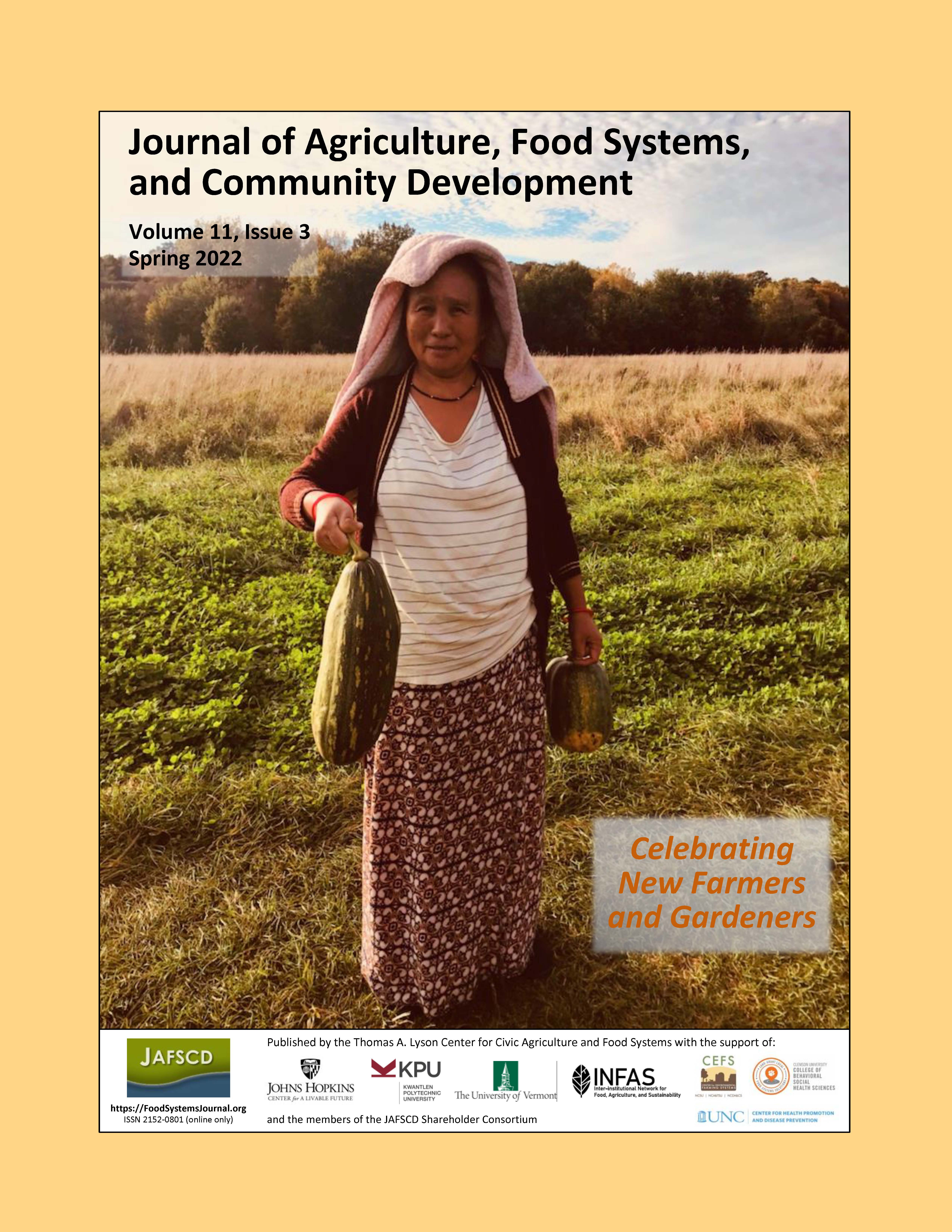Food sovereignty, health, and produce prescription programs
A case study in two rural tribal communities
DOI:
https://doi.org/10.5304/jafscd.2022.113.014
Keywords:
Food Sovereignty, Food Security, Food Access, Nutrition Assistance, Produce Prescription, GusNIP, American Indian/Alaska Native, Financial Incentives, Fruits and VegetablesAbstract
Structural inequities contribute to food systems in which tribal communities in the U.S. are more likely to experience barriers to healthy food access, including financial barriers, lack of geographic proximity, or both. Food sovereignty movements improve food access by shifting power to local people to build food systems that support cultural, social, economic, and environmental needs. Financial incentive programs, including produce prescription programs, have emerged as a promising intervention to improve food access and support food sovereignty. This case study describes the implementation of two federally funded produce prescription programs (Produce Prescription Projects or PPR) under the U.S. Department of Agriculture (USDA) Gus Schumacher Nutrition Incentive Program (GusNIP) in two rural tribal communities: the Yukon Kuskokwim Delta region in Alaska, and the Navajo Nation, which spans parts of New Mexico, Arizona, and Utah. We illustrate how PPR can be tailored to accommodate local and diverse cultures, strengthen community power, and be uniquely suited for the challenges of increasing access to nutritious food in rural tribal communities. We also highlight recommendations and future areas of research that may be useful for other rural tribal communities implementing PPR.
Metrics
Downloads
Published
How to Cite
Issue
Section
License
Copyright (c) 2022 Nadine Budd Nugent, Ronit A. Ridberg, Hollyanne Fricke, Carmen Byker Shanks, Sarah A. Stotz, Amber G. Jones Chung, Sonya Shin, Amy L. Yaroch, Melissa Akers, Roger Lowe, Carmen George, Kymie Thomas, Hilary K. Seligman

This work is licensed under a Creative Commons Attribution 4.0 International License.
The copyright to all content published in JAFSCD belongs to the author(s). It is licensed as CC BY 4.0. This license determines how you may reprint, copy, distribute, or otherwise share JAFSCD content.













